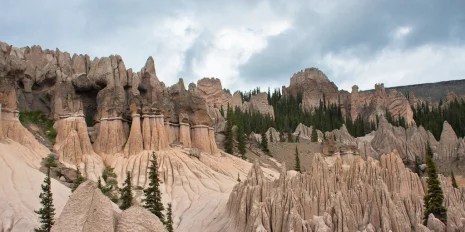Super-eruptions that dwarf all historical volcanic episodes in erupted volume and environmental impact are abundant in the geological record. Such eruptions of silica-rich magmas form large calderas. The mechanisms that trigger these supereruptions are elusive because the processes occurring in conventional volcanic systems cannot simply be scaled up to the much larger magma chambers beneath super volcanoes. Over-pressurization of the magma reservoir, caused by magma recharge, is a common trigger for smaller eruptions, but is insufficient to generate eruptions from large supervolcano magma chambers. Magma buoyancy can potentially create sufficient overpressure, but the efficiency of this trigger mechanism has not been tested. Here we use synchrotron measurements of X-ray absorption to determine the density of silica rich magmas at pressures and temperatures of up to 3.6 GPa and 1,950 K, respectively. We combine our
results with existing measurements of silica-rich magma density at ambient pressures to show that magma buoyancy can generate an overpressure on the roof of a large supervolcano magma chamber that exceeds the
critical overpressure of 10-40 MPa required to induce dyke propagation, even when the magma is undersaturated in volatiles. We conclude that magma buoyancy alone is a viable mechanism to trigger a super-eruption, although magma recharge and mush rejuvenation, volatile saturation or tectonic stress may have been important during specific eruptions.
Reference
Supervolcano eruptions driven by melt buoyancy in large silicic magma chambersMalfait, W.J., Seifert, R., Petitgirard, S., Perrillat, J.P., Mezouar, M., Ota, T., Nakamura, E., Lerch, P., Sanchez-Valle, C.
Nature Geoscience, online publication, January 2014 doi:10.1038/ngeo2042.
Contact
Prof. Dr. Carmen Sanchez-ValleInst. f. Geochemie und Petrologie
ETH Zurich
Phone: +41 44 632 43 19
E-Mail: carmen.sanchez@erdw.ethz.ch
Dr. Wim J. Malfait
EMPA
Phone:+41 58 765 49 83
E-Mail: wim.malfait@empa.ch
